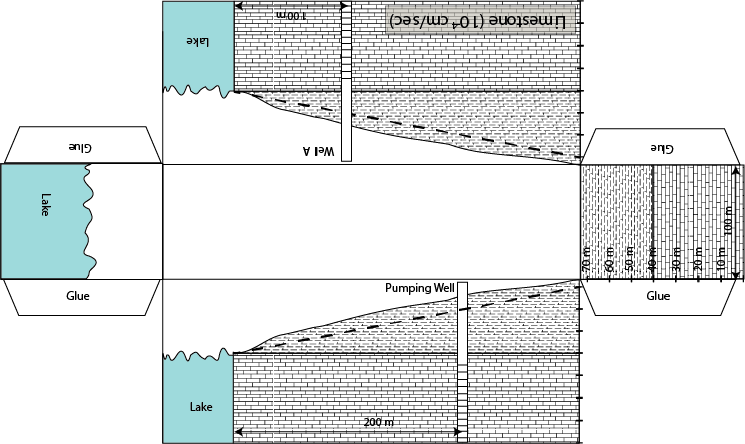Objectives: Quantify the drawdown in the potentiometric surface
due to groundwater pumping near a constant head boundary.
1. There are many cases in coastal aquifer where you must
calculate groundwater drawdown near an infinite source of water (i.e. the ocean
or large lake). As a result of this configuration
it is necessary to account for this boundary condition. To do this we use a method of images where a ‘fake’
or image well is placed in the lake or ocean an equal distance between the pumping
well and the boundary. In the problem below,
it is your job to determine the water level in well B due to pumping in the pumping
well at a pumping rate of 200 m3/day (36.7 gal/min). Note that before pumping there is a gradient
across the confined aquifer that shows water is flowing toward the lake. Use the foldable aquifer model provided to
answer the following question
A. Draw in map view a diagram showing the position of the
pumping well, observation well (well A) and image well.
B. Determine the water level in well A after pumping has
reached steady state.
C. Explain how the results would change if there was no
initial gradient in the potentiometric surface prior to pumping. In your description please state where you
would expect to see the water level in well A.


This work is licensed under a Creative Commons Attribution-NonCommercial 4.0 International License.
